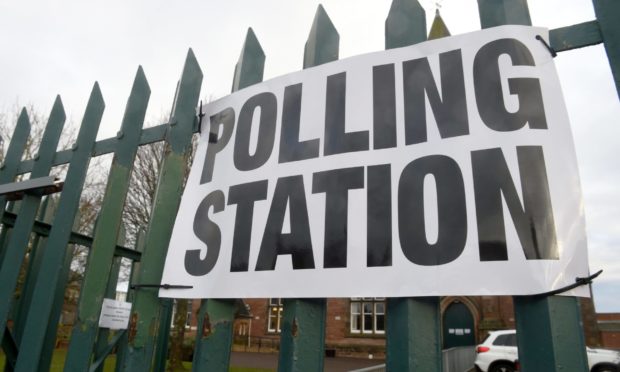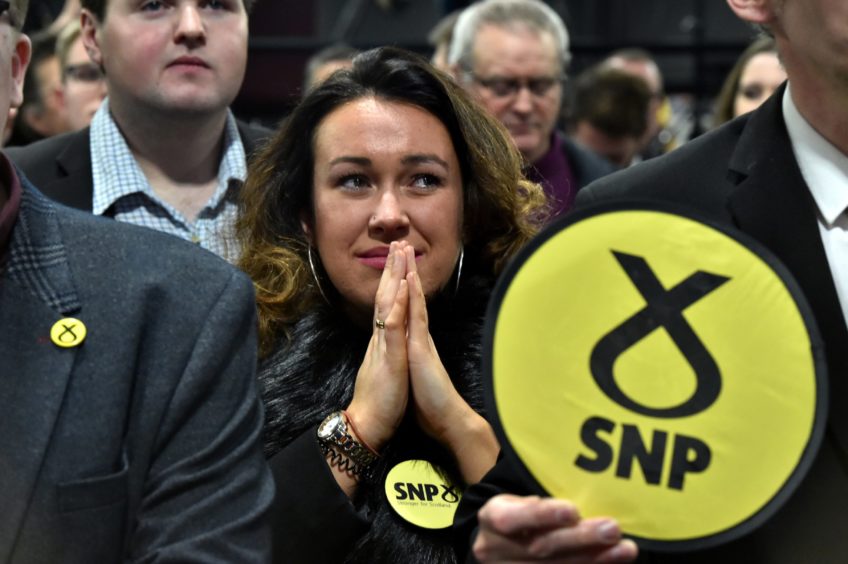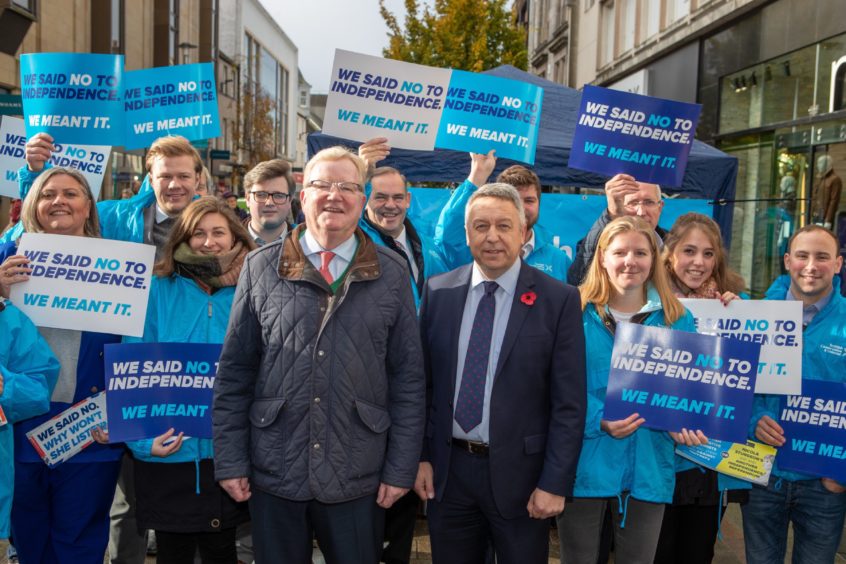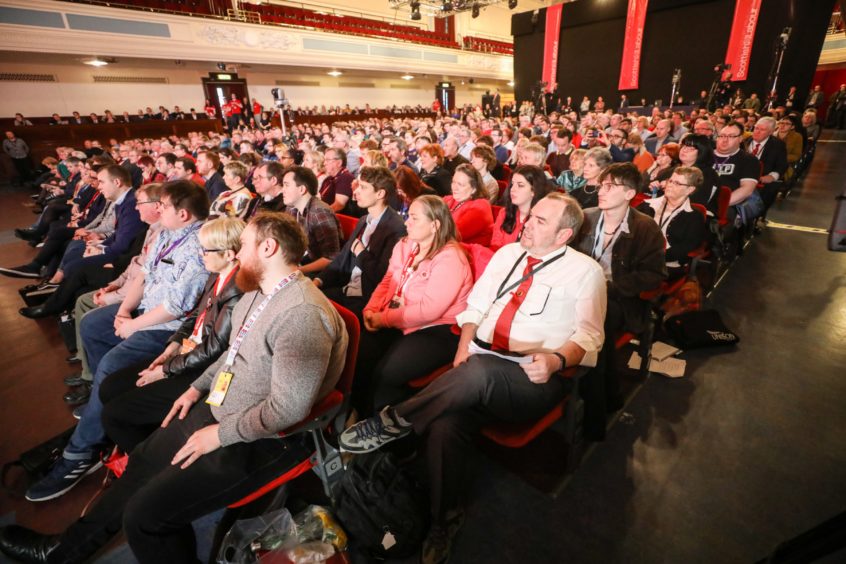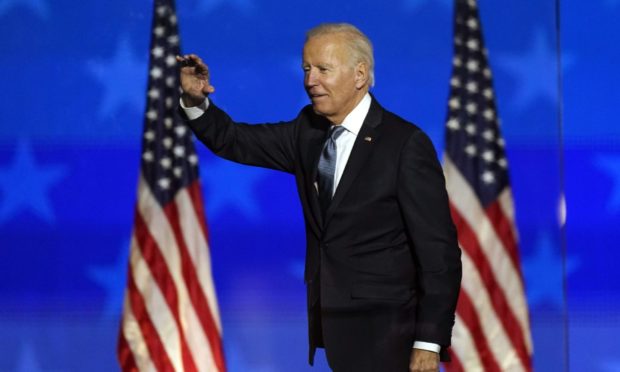With all going well, residents in Scotland aged 16 and older will head to the polls on May 6.
But if the first two weeks of 2021 have shown us anything, it’s that not all things are going well.
Even before lockdown 2 (lockdown the third in England) doubts were placed on whether the Holyrood election should take place in May, be postponed a couple of months or even moved to next year.
Money talks
There are strict rules on how much each party can spend in an election in the UK.
In Scotland the most any party could spend in 2016 was £1,516,000 and only if they were contesting every constituency and region.
Political party spending limits at the Scottish Parliament election depend on how many constituencies and regions the party is contesting.
Parties can only spend a maximum of £12,000 campaigning in constituencies, like Dundee City West or Aberdeen Donside.
With 73 available constituency seats up for grabs, the total maximum cost for running a candidate in each can add up to £876,000.
Parties can spend up to £80,000 campaigning in regions, like Mid Scotland and Fife or Highlands and Islands, of which there are eight, adding to a total of £640,000.
The limit of £1,516,000 is to remain the same for the 2021 election, the Electoral Commission has confirmed.
Parties do not have to attribute whether the money was spent regionally or on constituents, as it is a national limit.
The Electoral Commission did suggest the limits could be reviewed if the poll is postponed as a result of the coronavirus pandemic.
Where the money went
Ever wonder why so many leaflets get thrust through your letter box at election time?
In the two previous elections, political parties spent more than £3 million on “unsolicited materials” – more than every other expense combined.
During the 2019 UK general election, parties spent more on leaflets through doors than on Facebook advertising.
| Category | 2016 Expenditure | 2011 Expenditure |
| Party political broadcasts | £180,707 | £147,089 |
| Advertising | £973,605 | £438,601 |
| Unsolicited materials | £1,692,871 | £1,389,512 |
| Manifesto and policy documents | £69,798 | £34,922 |
| Market research and canvassing | £204,368 | £258,357 |
| Press conferences/media | £7,560 | £54,590 |
| Transport | £48,423 | £75,687 |
| Rallies and other events | £70,364 | £47,803 |
| Overheads and general administration | £87,937 | £183,932 |
Source: The Electoral Commission
Currently, party activists are playing a game of bluff with one another as to whether it is acceptable to chap doors and hand out leaflets.
SNP, Scottish Tory and Lib Dem sources said they are each waiting on the other to make the first move, a fear of being branded with undermining the pandemic being the reason.
Best made plans
The results of the 2016 election were reflected in how much each party spent on campaigning, with those spending the most winning the higher number of seats.
The SNP won 59 of the 73 constituency seats with 46.5% of the votes. The Conservatives won seven (22.0% of votes), Liberal Democrats four (7.9%) and Labour three (22.6%).
In the list voting, the SNP had 41.7% of votes, the Conservatives 22.9%, Labour 19.1%, Greens 6.6% and Liberal Democrats 5.2%.
This earned the Conservatives 24 list seats, Labour 21, Greens six, SNP four and Liberal Democrats one.
Overall, the SNP fell short of a majority in the Parliament winning 63 of the 129 seats – a decline of six compared with 2011. The Conservatives, with 31 seats, became the second-largest party – up from 15 in 2011.
SNP: By far the biggest spenders in the last decade, the SNP are likely to put just as much money into the 2021 campaign as they did in the two previous, i.e. as much as they are allowed.
The party will contest every seat in the country and has by far the largest number of paid members backing them as May approaches.
As of the end of 2019, the SNP boasted 125,691 people across 300 local organisations, with branches in London and Brussels.
Last year 42% of the SNP income came from membership fees, another 42% from fundraising and events, while the rest comes from legacy donations, parliamentary levy or policy development grant.
The SNP spent 45p in every £1 on campaign funds for the Scottish, local, Westminster and European elections.
In 2011 the party spent £1,141,662 and increased this to £1,465,542 in 2016.
For every seat won in 2016, the SNP spent £23,262.
Scottish Conservatives:
The Scottish Tories became Scotland’s second-largest party at Holyrood for the first time in 2016, under the leadership of Ruth Davidson.
They trebled their spending in 2016 compared to 2011, spending £978,921 and £273,462, respectively.
The Scottish Conservatives do not routinely publish membership numbers but a party source claimed there were 11,000 registered during the party’s first leadership election of 2019, and it had “likely increased”.
Similar to 2016, the party will stand in all seats and it is “likely” the budget will increase, if not to the same extent as it did between 2011 and 2016.
For every seat the Scottish Conservatives won in 2016, they spent £31,578.
Scottish Labour:
Scottish Labour were approached for membership numbers, but were not forthcoming.
The party spent £816,889 in the 2011 election and £337,814 in 2016, according to the Electoral Commission.
UK Labour has the largest number of paying members, with 496,000 recorded as of November 2020. The latest estimates on the number of Scottish Labour members stands at around 21,000, as of January 2019.
For every seat it won in 2016, the party spent £14,687.
Scottish Liberal Democrats:
The Scottish Lib Dems, who once shared power with Labour in the early days of Holyrood, in a coalition, spent £176,300 during the 2011 campaign.
Figures for spending on the 2016 vote were not available; however, the party spent less than the £250,000 required for declaration.
At most, the Lib Dems spent £50,000 per seat in 2016. However, the amount spent is likely to be closer to the 2011 figure, meaning each seat cost approximately £36,000.
The party does not “routinely publish” its membership numbers.
Thirteen parties contested the last election spending £250,000 or less. Apart from the Lib Dems and the Scottish Greens, none of the organisations below won seats.
- A Better Britain – Unionist Party
- Animal Welfare Party
- Christian Party “Proclaiming Christ’s Lordship”
- Clydesdale and South Scotland Independent
- Communist Party
- Co-operative Party
- Liberal Democrats
- National Front
- RISE – Respect, Independence, Socialism and Environmentalism
- Scottish Green Party
- Scottish Libertarian Party
- Solidarity – Scotland’s Socialist Movement
- Stronger Community Party
- Trade Unionist and Socialist Coalition
- UK Independence Party (Ukip)
- Women’s Equality Party
Hopes and dreams for 2021
Since the first vote, in 1999, Scottish Labour has steadily decreased its vote share both in constituencies and regionally.
The SNP has increased its vote share all round since 2007, while the Scottish Conservatives increased their share significantly in 2016, having lost ground between 2007 and 2011 before having a near-22% share of the regional and constituency vote each, between 2011 and 2016.
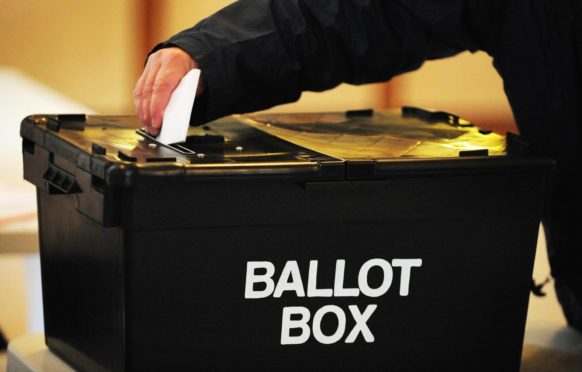
The share of Lib Dem votes from 2007 to 2016 remained roughly the same, with a 0.1% decrease in constituency share recorded between 2007 and 2011.
Polling for the election predicts the SNP returned as the largest party with a majority, with the Scottish Conservatives set to return as the “opposition”, albeit having lost as many as eight seats.
The Scottish Greens are predicted to increase the number of MSPs by five, while Labour are set to lose five MSPs and the Lib Dems will retain their current number of five.
Postal votes
Whether it postpones the election or not, the coronavirus pandemic will have a massive influence on how the poll is carried out.
As evidenced in the USA election in November 2020, double the number of postal votes were cast than in the election previously.
Human failings
Financially, it appears the trends of the past will provide similar results, with the parties spending the most likely to see the biggest return.
The political landscape changed between 2011 and 2016, with the first referendum on Scottish independence in 2014 setting the initial fault lines.
Since then, we have had a second referendum — on EU membership in 2016 — and despite the SNP increasing its membership substantially since 2014, the party failed to win a majority in 2016 following a surge in support for the Conservatives.
The Brexit factor
Scottish Conservative MSPs are wary on how they will perform in the upcoming election — their major concern being how the Westminster government led by Boris Johnson is viewed north of the border.
One senior Tory MSP said the actions of Mr Johnson and his former head adviser, Dominic Cummings, was having “serious repercussions” with voters.
The Tories performed well in 2016, partly as a result of the fall in Scottish Labour votes. The Scottish election took place before the EU referendum, also.
Brexit was rejected by voters in Scotland, with the SNP currently portraying themselves as the party of the EU.
A senior Lib Dem explained there would be many voters in 2021 who would have supported the SNP at the Westminster elections in 2019, but would draw the line at voting for them in 2021 over fears of Scottish independence.
These voters, the Lib Dem MSP noted, would be key for his party in increasing their vote share, which they hope will lead to an additional four seats.
A failed coup against Scottish Labour leader Richard Leonard did little to raise his profile in 2020, with the once all-powerful party likely to finish third for a second time.
Labour’s “muddled” stance on independence and whether there should be a second referendum, as well as not taking an overt-stance on Brexit will see the Scottish Conservatives trying their best to capitalise for a second time on Labour pro-UK votes, especially with people who might never have considered voting Tory in the past.
Thirteen years of government, falling educational results and a civil war between members and the leadership over the party’s direction (and support for a former leader) does not seem to have impacted polling predictions.
But predictions are just that, and politics is at its best when the full range of human emotion, effort and fallibility is on display.
